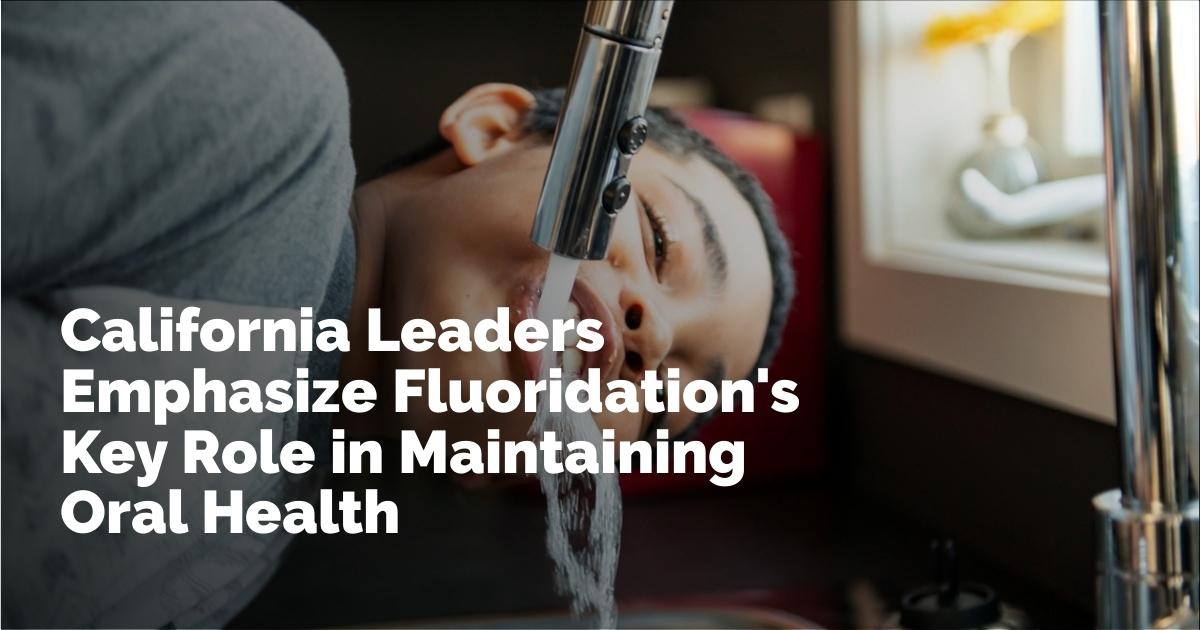California public health leaders recently took a decisive step in reaffirming the vital role of fluoridation in oral health maintenance. Through a joint statement, the state's dental director and other public health officials stressed the importance of fluoride in preventing tooth decay, particularly in the face of prevalent misinformation. This blog post will detail the significance of water fluoridation, address common misconceptions, explore national policy trends, and highlight the commitment to ensuring access to preventive oral care.
The Importance of Community Water Fluoridation
Fluoride, a naturally occurring mineral, has long been celebrated for its ability to prevent tooth decay and fortify enamel. The practice of adding fluoride to community water supplies, known as community water fluoridation, has been scientifically validated as a safe and effective strategy to reduce cavities in both children and adults. This is especially beneficial for underserved populations who may not have regular access to dental care.
In a recent statement, Dr. Erica Pan, Director and State Public Health Officer of the California Department of Public Health (CDPH), and Dr. Shakalpi Pendurkar, State Dental Director, emphasized that water fluoridation is the most cost-effective, equitable, and safe public health intervention available. According to their announcement, nearly 57.7% of Californians served by community water systems receive fluoridated water.
Community water fluoridation is praised for its ability to help everyone in the community, especially those without access to regular dental care. It effectively prevents tooth decay throughout a person's lifetime, significantly reducing the prevalence and severity of cavities. The practice has been endorsed by every major health organization in the United States and many other countries, as well as by every Surgeon General over the past five decades.
Debunking Misinformation on Fluoride Safety
In recent years, the scientific consensus on the safety and efficacy of fluoridation has been challenged by misinformation, sparking controversy. Some studies, marked by methodological shortcomings, were cited inaccurately in the National Toxicology Program’s systemic review, attempting to cast doubt on the benefits of fluoride and falsely raising safety concerns. However, neither the NTP’s review nor supporting studies have established a link between fluoride exposure and adverse health outcomes at the levels present in community water systems. This misrepresentation highlights the urgency for evidence-based decision-making in public health policy.
National Trends in Fluoride Policy
Nationally, misinformation has influenced policies regarding community water fluoridation. For instance, in Utah, a ban on this public health measure has sparked debate. Legislative trends show efforts to limit fluoride access, underscoring how misinformation can adversely affect community health. Reports from Juneau, Alaska, and Calgary, Canada, have demonstrated that when water fluoridation ceases, rates of dental disease climb, and the costs associated with treating dental conditions increase. Decades of research confirm that introducing optimal levels of fluoride into drinking water remains a safe and effective public health strategy.
Commitment to Public Health: Ensuring Access to Preventive Oral Care
The Centers for Disease Control and Prevention (CDC), CDPH, and the American Dental Association stand firmly behind community water fluoridation as a cost-effective measure to prevent dental disease. Studies indicate that fluoridation reduces cavities by approximately 25% over an individual's lifetime, helping to avert costly and painful dental treatments.
The CDPH’s Oral Health Program continues to furnish communities with resources aimed at educating the public on fluoride’s benefits, countering myths that threaten public health initiatives. The California Dental Association (CDA) maintains its dedication to advocating for evidence-based policies supporting oral health and access to preventive care. This commitment is exemplified through providing updated resources to enhance public understanding of fluoride’s health benefits.
In conclusion, embracing science-driven public health strategies, such as community water fluoridation, is crucial for mitigating the prevalence of dental diseases. As debates continue, it is vital that decision-makers, influenced by comprehensive and credible research, prioritize the welfare of the public, ensuring that Californians—and indeed all people—benefit from the preventive power of fluoridated water.
출처 : Original Source

